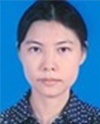Current Status of the Development and Future of Electric Vehicles
By Xiaomei Wu and Loi Lei Lai
In recent years, as a new means of transportation, electric vehicles (EVs) have been more highly valued by the international market because of their advantages of energy saving and emission reduction. This article analyzes electric vehicles development trends, including the use of renewable energy as a charging resource. It also includes discussion of a demonstration project of how EVs provide backup capacity to suppress load fluctuation.
In November 2016, the World Meterological Organization published a detailed analysis of the global climate during the period of 2011-2015, which is the hottest five-year period in recorded history. The International Energy Agency (IEA) said that in order to limit temperature rise below 2 degrees Celsius, global electric vehicle (EV) ownership in 2050 should reach 1 billion.
EVs using power from clean energy sources can reduce CO2 emissions. However, if the original source of that power is fossil-based, the CO2 emissions will increase due to the batteries poor net efficiency. EVs therefore should use renewable energy for charging. If EVs communicate with the power grid to reflect the prosumer response by charging from the grid or discharging to the grid, vehicle-to-grid (V2G) technology seems to be more important.
Existing EVs can mainly be divided into three types: battery electric vehicles (BEV), hybrid electric vehicles (HEV) and fuel cell electric vehicles (FCEV). BEV and Plug-in HEV are directly connected to the power grid. At any given time, 95 percent of cars are parked, so batteries in EVs could be used to return electricity to the grid or draw the electricity from the grid for peak load shifting. EVs can respond to prosumers of distribution system operators (DSO) or provide ancillary services for transmission system operators (TSO). Under current technology, the benefits to grid operations are:
- Price guidance by DSO. EV owners can obtain the charging and discharging electricity price for each time period through the Internet, mobile communications or mobile phone app. DSO can guide the charging and discharging behavior of EV owners to reduce the peak load and smooth the load curve.
- Integration with other loads to form load aggregation (LA). As EV owners are also the residents of communities, the integration with the smart community/home, called LA, can make electricity more economical through coordinated management.
- Cooperation with wind power, photovoltaic and other renewable energy sources. This can lessen the effects of renewable energy fluctuation, promote renewable energy consumption and reduce the use cost of EVs. It is necessary to make full use of the energy storage characteristics of EVs to build coordinated scheduling and market strategies between them and intermittent renewable energy sources.
- Combining EVs to form EV aggregators (EV-A). EVs indirectly involved in the power market through the accession to the EV-A could schedule to conduct a more reasonable charge and discharge behavior of the vehicles, which can also provide backup services for the grid and earn financial compensation.
The National Renewable Energy Laboratory of the U.S. Department of Energy conducted research, "Integrating PEVs with Renewables and the Grid.". Sharp Energy Storage System, Via Motors Van, Nissan Leaf, Smith EV Truck, Transpower School Bus, and Mini-E were analyzed. A June 2016 report included three possible outcomes over the next decade: a 10 percent reduction in the societal costs of power outages; a 33 percent decrease in the cost of reserve margins while maintaining reliability; and a 50 percent reduction in the costs of wind and solar and other DG integration.
If achieved, these three key outcomes would yield more than $7 billion in annual benefit to the U.S. economy. The following problems should be considered to achieve the management of EVs by aggregation. In the control of EVs by aggregators, the basic properties of the EV as the transportation and the owner's will should be considered. To have a reasonable dispatch contract, minimize the battery charge and discharge loss, the owners should know the details of the strategy.
Aggregators need to obtain real-time charging quantity, the battery status of EVs, and other information in order to transmit them to the control center. The monitoring process has greater requirements on the timeliness of information. Therefore, an advanced real-time measurement and communication device is most important.
In China, the Guangzhou intelligent charging infrastructure management platform was put into use in September 2016. It can provide users with on-demand charging navigation, status inquiries, charge appointments, cost settlement and other charging services through the “Yangcheng charge” app. This is similar to the Plugshare app in North America. However, neither is integrated with the smart grid to support renewable energy consumption.
On the Danish island of Bornholm the EDISON Project developed optimal system solutions for PEV system integration, including V2G technology to prevent negative impacts of high wind penetration to the grid. In Denmark wind turbines will accommodate 50 percent of total power in 2020. During peak load, or when the wind is calm, the power stored in PEVs will be fed back into the grid. From Global EV Outlook 2016 by IEA, the 2020 EV stock target in Denmark is 200k. With an EV continuous power of 100kW, the maximum up and down regulating power could be around 20 GW. EVs have a great potential to provide regulating power for balancing the fluctuation from electricity generated from renewables with intermittent issues.
The future development of EVs will rely on network communication and control technology, which interact with transportation network and energy Internet, and rely upon Internet of Things and big data cloud computing. The future work should focus on integrating the intelligent charging and discharging platform with renewable energy and making EV owners applied the economical and environmental charging strategy through intelligent car apps. And also since Graphene lithium ion battery has been developed, it can be quickly charged, with longer-life and lower operating temperatures. This technology should be considered for EVs in the future.
ACKNOWLEDGMENTS
The authors are grateful for the funding provided by the Department of Finance and Education of Guangdong Province 2016[202]: Key Discipline Construction Programme, China and the support from IEEE SMC Intelligent Power and Energy Systems Technical Committee.
Contributors

Xiaomei Wu, IEEE member, is an associate professor in the electrical department of Guangdong University of Technology, China. Her research interests are renewable energy generation, vehicle-to-grid systems and power market.She received her B.S. and M.Sc. degrees in power engineering from Northeast Electric Power University, China, in 1993 and 1997, respectively. She received an M.Eng. degree in electrical engineering from Concordia University, Canada, in 2004. She is a member of the IEEE Power & Energy Society and IEEE Systems, Man, and Cybernetics Society.

Loi Lei Lai, IEEE Fellow, is University Distinguished Professor at Guangdong University of Technology, Guangzhou China. He was Director of Research and Development Centre, Pao Yue Kong Chair Professor, Vice President and Professor & Chair in Electrical Engineering at State Grid Energy Research Institute, Beijing China; Zhejiang University China; IEEE Systems, Man and Cybernetics Society and City, University of London respectively. He was awarded D.Sc. by City, University of London. He was also awarded the IEEE Power & Energy Society's Energy Development and Power Generation Committee Transactions Prize Paper in 2006 and 2009. His research interests are in smart grid, clean energy and computational intelligence applications. He is a distinguished national expert in China and a Fellow of IET.
To have the Bulletin delivered monthly to your inbox, join the IEEE Smart Grid Community.
Past Issues
To view archived articles, and issues, which deliver rich insight into the forces shaping the future of the smart grid. Older Bulletins (formerly eNewsletter) can be found here. To download full issues, visit the publications section of the IEEE Smart Grid Resource Center.




